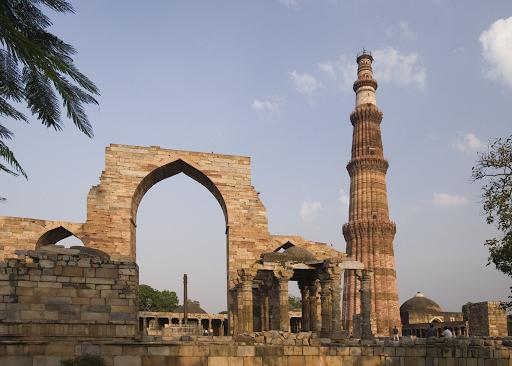United Nations Educational, Scientific and Cultural Organization (UNESCO) protected approximately 1154 sites on the World Heritage. Among 1154 here is the list of top 10 sites.
1. The Taj Mahal, India
2. Memphis and its Necropolis, Egypt
3. The Acropolis, Greece
4. Petra, Jordan
5. The Great Wall of China
6. Historic Centre of Rome, Italy
7. Machu Picchu, Peru
8. Rapa Nui National Park, Chile
9. Persepolis, Iran
10. Alhambra, Generalife and Albayzín, Spain
Showing posts with label UNESCO. Show all posts
Showing posts with label UNESCO. Show all posts
World heritage city Ahmedabad, India
The walled city of Ahmadabad, founded in 15th century by Sultan Ahmad Shah, on the eastern bank of the Sabarmati river, presents a rich architectural heritage from the sultanate period, notably the Bhadra citadel, the walls and gates of the Fort city and numerous mosques and tombs as well as important Hindu and Jain temples of later periods. Ahmedabad city is declared world heritagwe city by UNESCO on 08th July 2017. Ahmedabad, the largest city in the state of Gujarat, India, is home to several UNESCO World Heritage Sites. These sites showcase the city's rich cultural and architectural history. The following are the UNESCO World Heritage Sites in Ahmedabad:
These UNESCO World Heritage Sites in Ahmedabad reflect the city's historical significance and architectural brilliance. They are important landmarks that attract tourists and serve as a reminder of the rich cultural heritage of the region.
1. Historic City of Ahmadabad (City Walls):
The historic city of Ahmedabad is enclosed by fortified walls that were constructed in the 15th century CE. The walls feature intricate gates and bastions that are a testament to the city's architectural heritage.2. Bhadra Fort and Teen Darwaza:
Bhadra Fort is a magnificent structure built in the 15th century CE by Sultan Ahmed Shah, the founder of Ahmedabad. It houses several palaces, mosques, and government buildings. The Teen Darwaza (Triple Gateway) is a remarkable entrance to the fort and is adorned with intricate carvings.3. Jhulta Minar (Shaking Minarets):
Jhulta Minar is a unique architectural marvel located within the Sidi Bashir Mosque complex in Ahmedabad. The minarets are known for their intriguing construction, as if one minaret is shaken, the other one vibrates in response, despite being connected only by a series of balconies.4. Rani ki Vav (The Queen's Stepwell):
Rani ki Vav is an intricately designed stepwell located in the town of Patan, which is approximately 76 kilometers from Ahmedabad. Built during the 11th century CE by Queen Udayamati in memory of her husband, King Bhimdev I, it is considered one of the most elaborate and ornate stepwells in India. The stepwell is adorned with intricate carvings depicting various mythological and religious themes, showcasing the excellent craftsmanship of that era. Rani ki Vav showcases the mastery of ancient Indian architecture and is a significant example of the stepwell tradition prevalent in the region. It was inscribed as a UNESCO World Heritage Site in 2014 for its cultural and historical importance.These UNESCO World Heritage Sites in Ahmedabad reflect the city's historical significance and architectural brilliance. They are important landmarks that attract tourists and serve as a reminder of the rich cultural heritage of the region.
References
https://whc.unesco.org/en/list/1551
 |
| Source and credit: GettyImages Link |
UNESCO World Heritage Sites in Delhi, India
There are three UNESCO World Heritage Sites in Delhi. Those three sites are:
- Qutub Minar (declared in year 1993)
- Humayun’s Tomb (declared in year 1993)
- Red Fort (declared in year 2007)
National Institute of Foundry and Forge Technology at Ranchi
National Institute of Foundry and Forge Technology at Ranchi was set up in collaboration with UNDP-UNESCO (United Nation Development Program-United Nation Economic Social and Cultural Organisation). Both organizations UNDP and UNESCO are a body of the United Nations.
Established
The government of India established NIFFT at Ranchi in the year 1996 in collaboration with UNDP.
Collaboration
National Institute of Foundry and Forge Technology was set up in collaboration with UNDP-UNESCO.
Department
NIFFT has currently five departments.
- Department of Applied Science and Humanities,
- Foundry Technology,
- Forge Technology,
- Manufacturing Engineering and
- Materials and Metallurgical Engineering
Subscribe to:
Comments (Atom)
